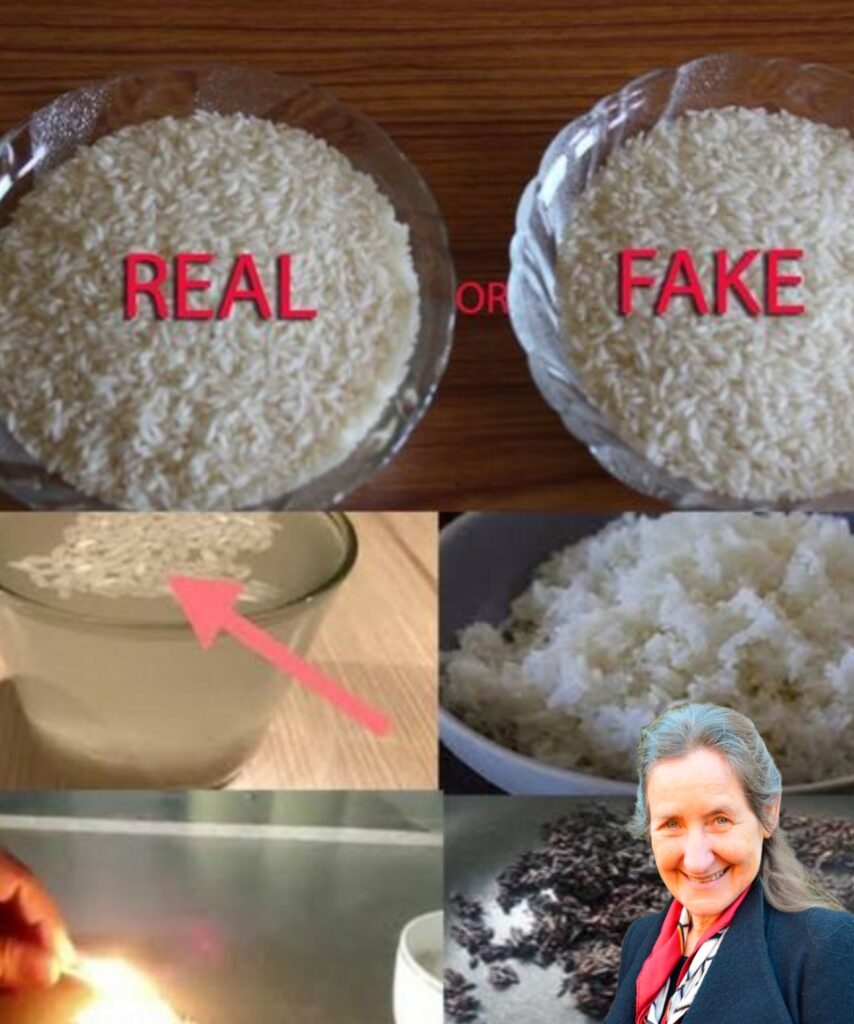Fake rice has become a growing concern in recent years, with reports of synthetic grains made from plastic or other harmful substances circulating widely. Consuming such counterfeit products can lead to serious health problems. Here are six simple and effective ways to identify fake rice and ensure your family’s safety:

1. The Water Test
- How to Do It: Take a handful of rice and put it into a glass of cold water. Stir gently and let it sit for a few minutes.
- What to Look For: Real rice will sink to the bottom, while fake rice made from plastic or resin may float on the surface.
2. The Boiling Test
- How to Do It: Cook a small batch of rice as you normally would.
- What to Look For: Fake rice may release a strong chemical smell during cooking, and the texture may feel rubbery or sticky in an unnatural way.

3. The Burn Test
- How to Do It: Take a few grains of rice and use a lighter to burn them carefully.
- What to Look For: Real rice will char slightly, while fake rice might emit a plastic-like odor and melt instead of burning.

4. The Mold Test
- How to Do It: Store cooked rice in a sealed container at room temperature for 2-3 days.
- What to Look For: Real rice will spoil and develop mold, whereas fake rice may remain unchanged, indicating synthetic materials.

5. Check the Packaging
- How to Do It: Inspect the rice’s packaging for official certifications, expiry dates, and manufacturing details.
- What to Look For: Fake rice often lacks proper labeling or comes in poorly printed packaging. Stick to trusted brands with verified credentials.

6. The Crushing Test
- How to Do It: Take a few grains of rice and crush them with a mortar and pestle.
- What to Look For: Real rice should break down into fine powder, while fake rice might feel oily or crumble in an unnatural way.
Conclusion
By following these simple tests, you can identify fake rice and protect your health. Always buy rice from reputable sources and pay attention to its appearance, texture, and packaging. Remember, safety starts with awareness!





